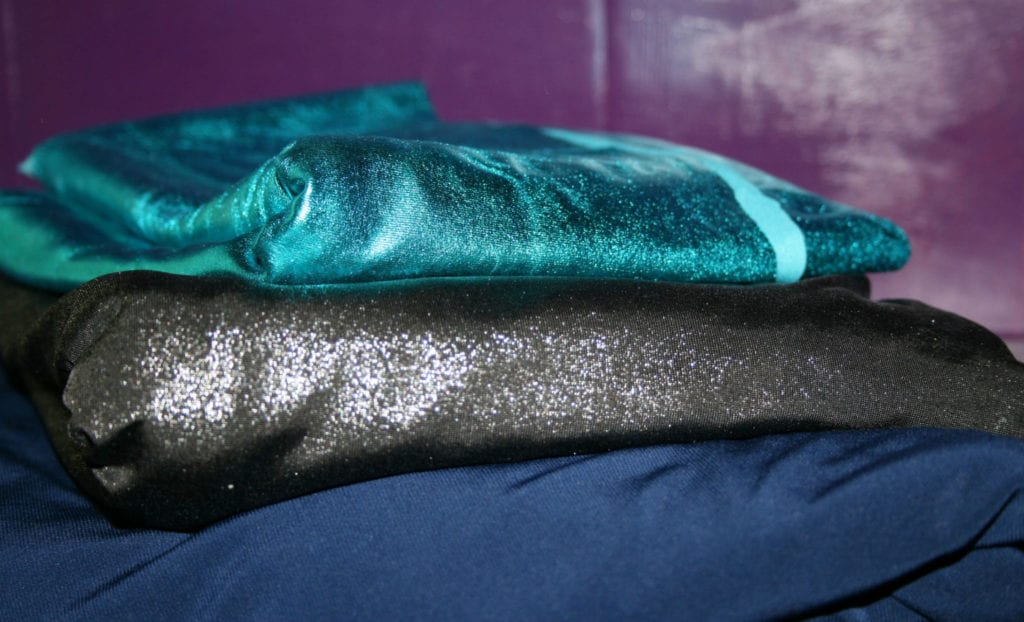
Lycra, Spandex and Elastane are all names for the same Fiber
First developed by DuPont, Lycra is a polyurethane fiber. The two prepolymers, one long and flexible and the other short and stiff, link to form a folded or twisted fiber which can be stretched up to five times its length. When tension is released, the fiber springs back to its original length.
Spandex is the generic name for Lycra. It is by far the stretchiest fiber used in fabrics, especially in clothing. It is found not only in clothing. Read the descriptions of mattresses, and you will see that the cover fabrics on several of them, including the Snuggle-Pedic Mattress,are blends including Lycra, spandex, or elastane (all names for the same thing). These fabrics also appear on some pillows – such as the Snuggle Pedic Ultra-Luxury, the Body Pillow by Snuggle-Pedic, and the Shredded Memory Foam Pillow by Xtreme Comforts.
When was Spandex Invented?
In 1959, Joseph Shivers, a DuPont chemical engineer, produced a polymer of polyether and polyurea, dubbed Fiber K. By the time it was introduced into the marketplace in 1962, DuPont branded it Lycra. To make a generic name for the new fiber, the first letter and last two letters of “expands” were transposed, yielding spandex. In Europe, elastane was adopted as a generic for Lycra.
The division of DuPont which produced Lycra was spun off as a separate corporation, Invista. It was sold to Koch Industries in 2004.
What Is Spandex?
Spandex is a polymer in the polyurethane class of synthetic materials. It is made of flexible polyglycols (PGs) – themselves polymers – and rigid diisocyanate (DIC) – DIC is used in making polyurethane. The resulting fibers fold up with the rigid DIC sections linking. At the microscopic level, it is like a spring. When pulled on, the DICs separate and the PGs straighten out. Depending on the length of the PG sections relative to the DIC sections, the fiber can be stretched up to 5 or 6 times its relaxed length. When the tension is released, the PG sections fold up again, and the fiber returns to its original length.
The polyglycol used in making spandex can be polyethylene, polyester, or polyether. It was invented as a result of research for rubber substitutes during World War II. Though synthetic rubber and other substitutes were found and used during the war, research continued afterwards.
Like rayon, polyester, nylon, and other manufactured fibers, the material – natural or synthetic – is produced as a liquid. This liquid is forced through a spinneret (a metal plate with tiny holes), and the extruded liquid hardens into fibers (spandex requires one chemical solution to harden the fibers and another to condition them). The fibers are spun into multi-stranded thread and wound onto spools.
Why Use Spandex?
Here are a few of the advantages of spandex:
- It is resistant to detergents, body oils, and sweat, making it more durable than rubber.
- It is lightweight.
- It resists abrasion better than elastic rubber.
- It is soft.
- It can be dyed.
- It is as stretchable, or more so, than rubber, and returns to its original size.
How Is Spandex Used?
Spandex/Lycra/Elastane is blended with other fibers (such as cotton, polyester, nylon, silk, or rayon) for use in fabrics. Usually this is a very small percentage. For instance, the Kool-Flow fabric used by Snuggle-Pedic is only 0.6% Lycra. The fabric then has more give for conforming to both the sleeper above and the memory foam beneath.
Spandex is used extensively in women’s foundation garments, athletic wear, socks, dancing clothing, etc. Some of these contain a higher percentage of spandex than others, depending on the desired performance of the fabric.
Many of us may remember the old elastic thread as a rubber strand with an extremely thin cotton thread wound tightly around it. Also, elastic bands were woven of elastic threads. Some of this is still available, but is in the process of being replaced by spandex.
While Shopping
If you check the materials in the cover when shopping for a mattress or pillow, do not be surprised if you see lycra or spandex named.
Sources
Beds.Org, “Lycra/Spandex/Elastane” (May 22, 2015) – http://www.beds.org/blog/lycraspandexelastane/
“Nylon” (Dec. 10, 2014) – http://www.beds.org/blog/nylon/
“Silk” (July 27, 2014) – http://www.beds.org/blog/silk/
Memory Foam Mattress.Org, “Snuggle-Pedic Mattress” (May 18, 2017) – https://memoryfoammattress.org/snuggle-pedic-mattress/
“Snuggle-Pedic Ultra-Luxury Shredded Memory Foam Pillow Review” (Aug. 27, 2017) – https://memoryfoammattress.org/snuggle-pedic-ultra-luxury-shredded-memory-foam-pillow-review/
“Snuggle-Pedic Shredded Memory Foam Body Pillow Review” (Aug. 26, 2017) – https://memoryfoammattress.org/snuggle-pedic-shredded-memory-foam-body-pillow-review/
“Xtreme Comforts” (Sept. 20, 2017) – https://memoryfoammattress.org/xtreme-comforts/
“Rayon (Viscose)” (May 5, 2017) – https://memoryfoammattress.org/rayon-viscose/
“Polyester” (Sept. 9, 2017) – https://memoryfoammattress.org/polyester/
“Cotton, Ancient and Modern Fiber” (Apr. 15, 2017) – https://memoryfoammattress.org/cotton-ancient-and-modern-fiber/
American Chemical Society, Cemichal & Engineering News, “What’s That Stuff? – Spandex” (Feb. 15, 1999) – https://pubs.acs.org/cen/whatstuff/stuff/7707scitek4.html
Wikipedia, “Spandex” (June 16, 2005, ed. Oct 24, 2017) – https://en.wikipedia.org/wiki/Spandex
“Invista” (Dec 23, 2007, Ed. July 1, 2017) – https://en.wikipedia.org/wiki/Invista
How Products are Made, Vol 4, “Spandex” (n.d.) – http://www.madehow.com/Volume-4/Spandex.html

